The setting for Roma Nova
by Alison Morton

Imagining Roma Nova – Or is it real?
Ever since I read Violet Needham’s Stormy Petrel series as a child I’ve been caught by the idea of imaginary countries in Central Europe. Needham’s books for children invoke a romantic ‘otherwhere’, making it familiar, with a subtle, understated magical tone. Possibly seeming old-fashioned now, she’s very much the unsung, and sadly unknown, mother of modern fantasy with a mix of heroism, sacrifice and honour. At first her books were deemed by (grown-up) publishers to be too complex for children, but the story goes that one of the children of a family director at William Collins publishers loved the story, so it was accepted for publication. Talk about serendipity!
A little older, I was entranced by The Prisoner of Zenda and its sequel Rupert of Hentzau – classic examples of ‘Central Europe’. I thirsted after everything I could find about this amorphous region with no defined boundaries but a definite idea of itself. The Austro-Hungarian Empire seemed to be a concrete representation, but it wasn’t quite. When I learnt German, I found many ideas and writings about Mitteleuropa as a concept. As an adult, I found The Radetzky March by Joseph Roth to be a sweeping history of heroism and duty, desire and compromise, tragedy and heartbreak, a story over generations that lasts until the eve of the First World War. But that empire was vast, diverse and autocratic. Like the Ancient Roman Empire, it collapsed under its own weight and the pressure of people’s desire for their own homeland and self-governance, whether by conquest or democracy.
With all that in mind, my even greater obsession with all 1,229 years of Ancient Rome and a reasonably good knowledge of the alpine regions, I dreamt about an ideal place for the setting for my Romans seeking a new home. But it would be a small colonia, not an empire! It had to be fertile enough to sustain people, defendable and off the beaten track. So I started researching…

Imagine my delight when I found in real history that at the dusk of the Western Roman Empire people had actually established safe places in the mountains called Fliehburgen. A number of these successfully protected their population during the barbarian invasions, sometimes developing into permanent settlements for decades in the most dangerous periods. And for the Roma Novans, this became necessary in the years after the story in EXSILIUM.
Over their history, the Roma Novans, cultivated their land, built their cities, suffered invasion, rebuilt their cities, extended their holdings, negotiated treaties and managed to survive into the 21st century when the first modern Roma Nova adventure takes place in INCEPTIO.
What does Roma Nova look like in the 21st century?
It’s an alpine country with lower lying valleys a few small towns (Castra Lucilla to the south of the main city, Brancadorum at the east, Aquae Caesaris to the west) and a river city full of columns, a forum, Senate house and temples. High mountains and hills to three sides, although very useful for defence in past ages, keep the 21st century pilots from Air Roma Nova (and most international airlines) on their toes when landing their passenger aircraft after a long haul flight!
Sadly, you can’t use Google Maps to view Roma Nova’s geography from space nor load a Wikipedia page for its history. But inventing a country doesn’t mean you can throw any old facts into your book. They have to hang together. Geography is very important as you need to know what crops they can grow – spelt, oats, olives in sheltered areas, vines, vegetables and fruit – and what animals they raise – cows, sheep, horses, pigs, poultry, etc.

To look back to when those first Roman dissidents left Italy in AD 395 and trekked north to found Roma Nova, I also needed to deepen my specific knowledge about Roman life and culture at that time: their mindset, their customs, their concerns, their ways of doing things. As a reference, the first chapters of Christopher Wickham’s book The Inheritance of Rome draws a clear and detailed picture.
With the Roma Nova books, I’ve used terms that people might already know like the Roman sword, gladius, greeting such as salve, solidi as money, ranks like legate and centurion. But I’ve made the gladius carbon steel, the solidi have currency notes, debit cards and apps as well as coins, and I’ve mixed in other European military ranks such as captain in with traditional Roman ranks. It gives a sense of history that’s gone forward and adapted to the modern age.
Ancient Romans were fabulous engineers and technologists, organised and determined to apply practical solutions to the needs of their complex and demanding civilisation, so I’ve positioned them in the 21st century at the forefront of the communications and digital revolutions.
The silver mines in Roma Nova’s mountains and the resulting processing industry that underpinned Roma Nova’s early economy, and still play an extremely important role in 21st century Roma Nova, are another allusion to ancient Rome. Silver was a big reason the Romans wanted Britannia. Dacia (Romania) and Noricum (Austria) in central Europe were also of special significance to ancient Rome, as they were very rich in high quality deposits of silver, as well as iron ore, some gold and rare earths. Giving Roma Nova extensive silver deposits provides a strong, plausible reason for its economic survival through the ages.
I also wanted my imaginary country to be near Italy and Austria for international connections. So it had to be in south central Europe. In the end, I pinched Carinthia in southern Austria, and northern Slovenia as my models. And in summer 2023, I went to the old Noricum capital of Virunum, near Klagenfurt in Austria and was thrilled to visit breathe in the air of ‘Roma Nova’.
Alison Morton © March, 2024
Alison’s social media links:
Connect with Alison on her thriller site: https://alison-morton.com
Facebook author page: https://www.facebook.com/AlisonMortonAuthor
X/Twitter: https://twitter.com/alison_morton @alison_morton
Alison’s writing blog: https://alisonmortonauthor.com
Instagram: https://www.instagram.com/alisonmortonauthor/
Goodreads: https://www.goodreads.com/author/show/5783095.Alison_Morton
Threads: https://www.threads.net/@alisonmortonauthor
Alison’s Amazon page: https://Author.to/AlisonMortonAmazon
Newsletter sign-up: https://www.alison-morton.com/newsletter/

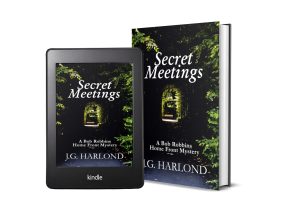
 While researching events in Britain during 1944, I came across a short comment made by someone on a history blog about how Churchill and Eisenhower met for an ultra-secret meeting at a private home on the east coast of Scotland in the month prior to D-Day.
While researching events in Britain during 1944, I came across a short comment made by someone on a history blog about how Churchill and Eisenhower met for an ultra-secret meeting at a private home on the east coast of Scotland in the month prior to D-Day.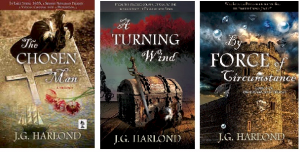
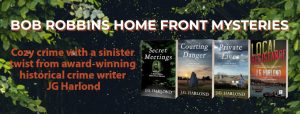

 From my desk here in the Province of Málaga I can see the Sierra de Las Nieves. This was where the Moors of Al-Ándalus used to harvest snow to be collected in summer for sherbet and to keep medicines cool. To the right out of a large picture window is the bandalero country of The Empress Emerald; to the left, beyond mauve-shaded mountains, are ancient fishing villages now known as the Costa del Sol, but once prey to the Barbary corsairs featured in The Chosen Man Trilogy.
From my desk here in the Province of Málaga I can see the Sierra de Las Nieves. This was where the Moors of Al-Ándalus used to harvest snow to be collected in summer for sherbet and to keep medicines cool. To the right out of a large picture window is the bandalero country of The Empress Emerald; to the left, beyond mauve-shaded mountains, are ancient fishing villages now known as the Costa del Sol, but once prey to the Barbary corsairs featured in The Chosen Man Trilogy. 
 Despite my somewhat Latinized outlook, though, what I see through my Spanish picture window when I am at my desk in Málaga is still with a realistic Englishwoman’s eyes.
Despite my somewhat Latinized outlook, though, what I see through my Spanish picture window when I am at my desk in Málaga is still with a realistic Englishwoman’s eyes.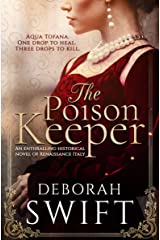 If, like me, you enjoy novels that takes you into the past and/or far away, check out the excellent Bristish historical fiction author, Deborah Swift. She has a new novel set in 17th century Italy out now, too.
If, like me, you enjoy novels that takes you into the past and/or far away, check out the excellent Bristish historical fiction author, Deborah Swift. She has a new novel set in 17th century Italy out now, too.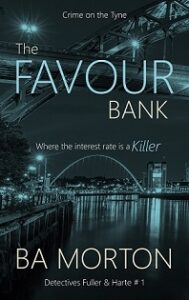 If you enjoy gritty, contemporary British police crime fiction, try B.A. Morton’s frightening, heart-rending ‘Crime on the Tyne’.
If you enjoy gritty, contemporary British police crime fiction, try B.A. Morton’s frightening, heart-rending ‘Crime on the Tyne’.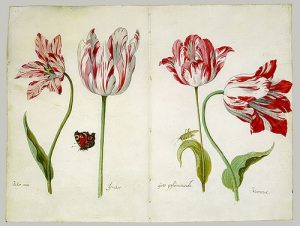 The conspiracy theory behind Ludo’s actions is unproven, but the tulip bubble was very well documented at the time. Contemporary reports and records of sales transactions demonstrate the outrageous escalating prices paid up to 1637, when the bubble burst.
The conspiracy theory behind Ludo’s actions is unproven, but the tulip bubble was very well documented at the time. Contemporary reports and records of sales transactions demonstrate the outrageous escalating prices paid up to 1637, when the bubble burst.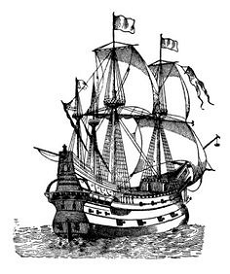 To write this second book I had to read about taxes and tariffs on cargoes from the East, about gems and silks, and secret treaties between England and Spain. Ludo becomes involved in delicate personal missions for two monarchs and sets in motion his vendetta on the Doria clan, who rejected his mother on her return to Liguria and exiled her to the castle in Porto Venere.
To write this second book I had to read about taxes and tariffs on cargoes from the East, about gems and silks, and secret treaties between England and Spain. Ludo becomes involved in delicate personal missions for two monarchs and sets in motion his vendetta on the Doria clan, who rejected his mother on her return to Liguria and exiled her to the castle in Porto Venere. Imagining these places in the past was not difficult, although Lisbon was effectively destroyed during a major earthquake in the 18th century, which made describing the old city rather more creative than factual.
Imagining these places in the past was not difficult, although Lisbon was effectively destroyed during a major earthquake in the 18th century, which made describing the old city rather more creative than factual.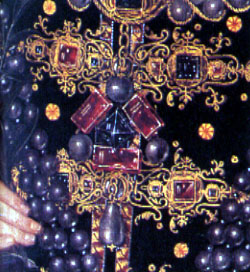 To write this part of the story I needed to find out what happened to certain gems, brooches, necklaces and pearl-studded hatbands belonging to the English Crown Jewels. Queen Henrietta Maria’s attempts to sell and pawn these royal heirlooms was well documented at the time, although a few, including the spinel clasp named The Three Brethren, did go astray. What Ludo does with the jewels is largely my invention, but a Portuguese Catholic princess did marry an English monarch so to an extent I was only playing with facts. It became a matter of ‘what if . . .’ combined with Ludo’s capacity for mischief.
To write this part of the story I needed to find out what happened to certain gems, brooches, necklaces and pearl-studded hatbands belonging to the English Crown Jewels. Queen Henrietta Maria’s attempts to sell and pawn these royal heirlooms was well documented at the time, although a few, including the spinel clasp named The Three Brethren, did go astray. What Ludo does with the jewels is largely my invention, but a Portuguese Catholic princess did marry an English monarch so to an extent I was only playing with facts. It became a matter of ‘what if . . .’ combined with Ludo’s capacity for mischief.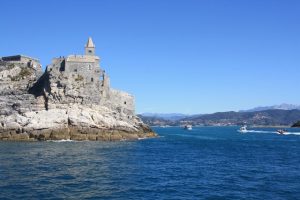 This final story takes Ludo back Porto Venere. The name derives from a temple dedicated to the goddess Venus. I’d had the final scene of the trilogy in mind for a very long time, but writing it brought tears to my eyes. Ludo and Alina had become real people for me.
This final story takes Ludo back Porto Venere. The name derives from a temple dedicated to the goddess Venus. I’d had the final scene of the trilogy in mind for a very long time, but writing it brought tears to my eyes. Ludo and Alina had become real people for me. Each of the books in The Chosen Man Trilogy is a Readers’ Favorite 5*. If you have enjoyed the stories, please leave a review on your retailer’s site.
Each of the books in The Chosen Man Trilogy is a Readers’ Favorite 5*. If you have enjoyed the stories, please leave a review on your retailer’s site.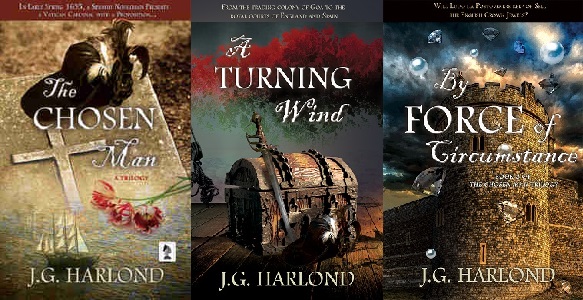
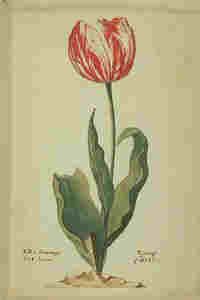 The first Ludo story was inspired by a combination of two events; one very real with devastating financial consequences, the other un-real, other-worldly, when I ‘saw’ people during a visit to Cotehele in Cornwall (while preparing for another book altogether). Cotehele, a National Trust property on the River Tamar, became the fictional house Crimphele, then the story-line fell into place as I watched news coverage of the Lehman Brothers and mortgage scandals in the USA. I had lived in the Netherlands, was acquainted with the tulip bubble, and it seemed quite plausible that a character such as Ludo (the infamous ancestor of Leo Kazan in The Empress Emerald) might be employed as an agent provocateur acting for Habsburg Spain and, supposedly, for Rome. After fitting these elements together, I then had to learn some hard facts behind ‘tulip mania’ and some of the vaguer, barely credible history behind Vatican espionage and secret agents. It took a good two years to write The Chosen Man, fortunately reviews show it was all worthwhile.
The first Ludo story was inspired by a combination of two events; one very real with devastating financial consequences, the other un-real, other-worldly, when I ‘saw’ people during a visit to Cotehele in Cornwall (while preparing for another book altogether). Cotehele, a National Trust property on the River Tamar, became the fictional house Crimphele, then the story-line fell into place as I watched news coverage of the Lehman Brothers and mortgage scandals in the USA. I had lived in the Netherlands, was acquainted with the tulip bubble, and it seemed quite plausible that a character such as Ludo (the infamous ancestor of Leo Kazan in The Empress Emerald) might be employed as an agent provocateur acting for Habsburg Spain and, supposedly, for Rome. After fitting these elements together, I then had to learn some hard facts behind ‘tulip mania’ and some of the vaguer, barely credible history behind Vatican espionage and secret agents. It took a good two years to write The Chosen Man, fortunately reviews show it was all worthwhile. A long, long time ago I had a gap year job in a jewellery and antique shop, it wasn’t what I wanted to do for the rest of my life, but I learnt a lot and it helped greatly while preparing notes for A Turning Wind. During my research, I came across the writing of the French merchant-explorer Jean-Baptiste Tavernier (1605-1689). In a spell-binding account of how diamonds were mined in the Golconda region of India, Tavernier quotes an account supposedly written by Marco Polo of how diamonds were found and traded in the area centuries before. It was too good not to use so I wove it into the opening scene. That, and the ancient ethical origins of the game Snakes and Ladders, created the background for Ludo’s second adventure, via documented history on Portugal and the ambitious Duchess of Braganza, and a little known, unrealized treaty between Charles 1st and Felipe IV of Spain. Having spent many years living near El Escorial, the scenes set there with the infamous Conde-Duque de Olivares and Velazquez were easy to write.
A long, long time ago I had a gap year job in a jewellery and antique shop, it wasn’t what I wanted to do for the rest of my life, but I learnt a lot and it helped greatly while preparing notes for A Turning Wind. During my research, I came across the writing of the French merchant-explorer Jean-Baptiste Tavernier (1605-1689). In a spell-binding account of how diamonds were mined in the Golconda region of India, Tavernier quotes an account supposedly written by Marco Polo of how diamonds were found and traded in the area centuries before. It was too good not to use so I wove it into the opening scene. That, and the ancient ethical origins of the game Snakes and Ladders, created the background for Ludo’s second adventure, via documented history on Portugal and the ambitious Duchess of Braganza, and a little known, unrealized treaty between Charles 1st and Felipe IV of Spain. Having spent many years living near El Escorial, the scenes set there with the infamous Conde-Duque de Olivares and Velazquez were easy to write. One of my aims while writing this trilogy was to show how decisions made in high places can have appalling consequences for ordinary members of society. This story in particular shows how one’s personal destiny can be determined by events far beyond one’s control. The over-riding circumstance here is a civil war. What happens to Ludo, Alina and Marcos is determined by a conflict not of their making in a country not their own and their efforts to safeguard their families. Regrettably, it is something many readers can relate to nowadays.
One of my aims while writing this trilogy was to show how decisions made in high places can have appalling consequences for ordinary members of society. This story in particular shows how one’s personal destiny can be determined by events far beyond one’s control. The over-riding circumstance here is a civil war. What happens to Ludo, Alina and Marcos is determined by a conflict not of their making in a country not their own and their efforts to safeguard their families. Regrettably, it is something many readers can relate to nowadays.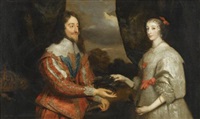
 On Edward’s death, the magnificent Three Brethren passed into the hands of his elder sister Mary, then became a favourite jewel of Elizabeth I. It features in several of her portraits including the famous ‘ermine portrait’. Subsequent portraits of James 1st of England, VI of Scotland show him wearing the Three Brethren as well.
On Edward’s death, the magnificent Three Brethren passed into the hands of his elder sister Mary, then became a favourite jewel of Elizabeth I. It features in several of her portraits including the famous ‘ermine portrait’. Subsequent portraits of James 1st of England, VI of Scotland show him wearing the Three Brethren as well.